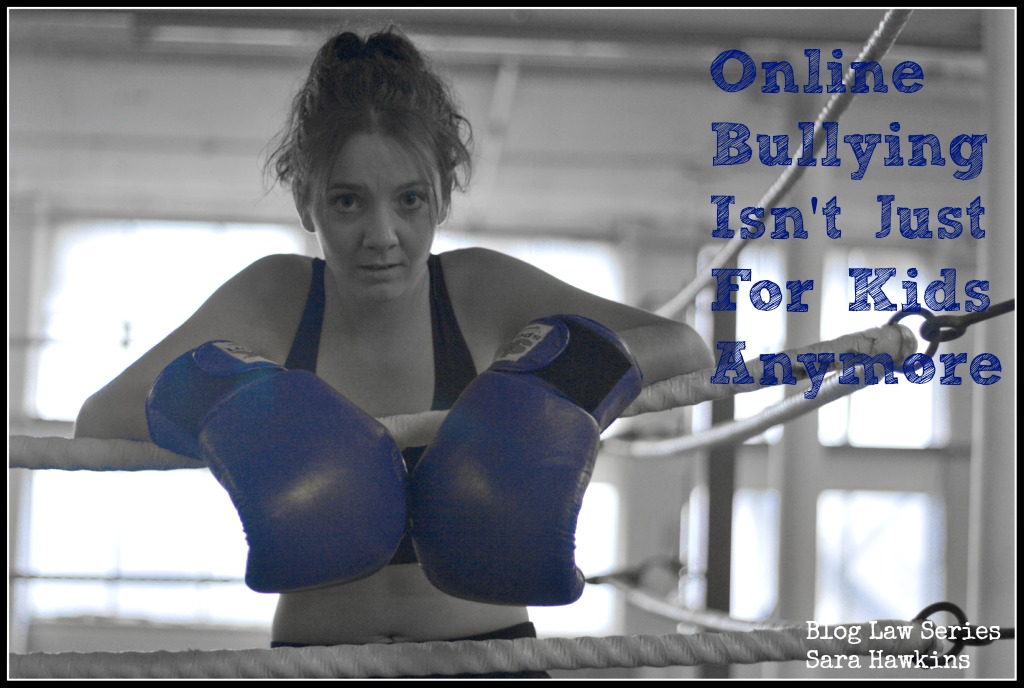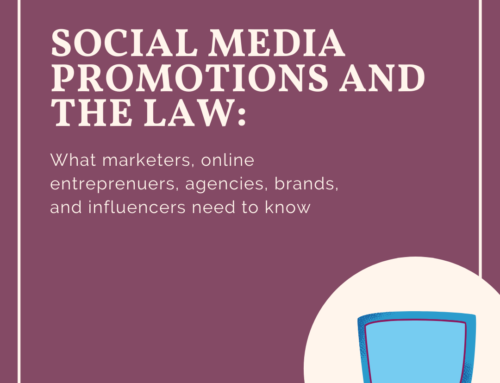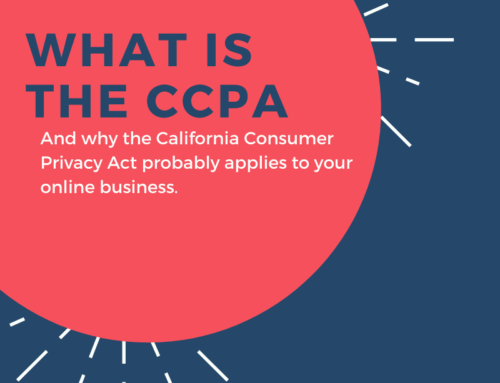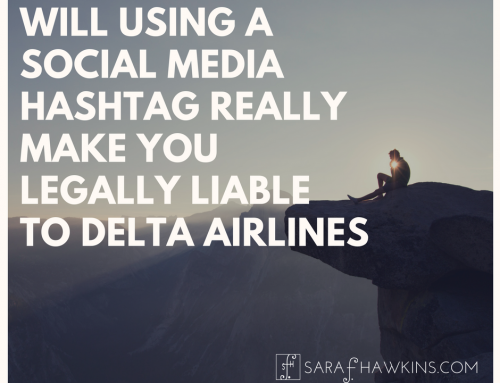
In some ways I feel like a therapist. I get emails with details on how a blogger or small brand is being taunted and tormented by others online. I completely feel for them because I have my own trolls and ‘mean girls’.
I always thought that grown ups would be different. I figured that I’m a professional, they are professionals so we should all be able to co-exist. Really, there is plenty of room for all of us. Or so I thought.
It’s not uncommon to hear stories of brand bashing. Companies hire bloggers, forum managers and website moderators to write negative stories about competitors. Called BADVOCATES, these people write bad things about the competitive brands to drive traffic away from the competitor and to the company in question. It’s being a bully for hire.
Now with Facebook and Twitter it’s easy, too, for brands to pepper these two platforms with negative information, misinformation, outright lies, inappropriate links and other types of online communication. I’ve even heard about people being paid to stir up fights within comments.
One of the aspects that pains me the most is how women go after each other in such hateful and vicious ways. As brands reach out more to women to help communicate their messages, the blogosphere often looks more like a high school than a professional landscape.
Rosalind Wiseman summed up years of research in her best seller Queen Bees and Wannabes. It was turned into a successful movie called, appropriately, Mean Girls. It easily could be updated and called Mean Women. I see it every day. More than I ever thought I would.
Online bullying is much more pervasive than we imagine. There are few statistics because online/cyber harassment is still so new. And, truthfully, few want to admit that they’ve ever bullied anyone. And those bullied or harassed often do not want to come forward for fear of further being targeted.
Online bullying takes many forms, all of which are inappropriate. Few of which ever rise to being illegal. Therein lies the problem. What do you do when you’re being harassed online via social platforms? How do you fight back when others are working behind the scenes and there is no way to know, even, who your attacker is.
5 Areas of Online and Social Bullying
1. Comments – negative comments on websites and blogs are part of online discourse. But if you notice that you’re getting a lot of negative, rude, hurtful, spammy, insulting, or profane comments then start moderating or pay close attention to IP addresses. And, remember, ultimately, it is your site and you make the rules!
2. Twitter – the bullying on Twitter can take so many forms, many of which we may not readily become aware of. There’s no way to search to see if your avatar is being used, so we rely on our network of friends and friends of friends. We can’t conjure up weird hashtags or twitter handles that might be geared toward us.
However, we can see what comes through our mentions and @ replies. Don’t ignore any tweets that seem to be harassing in nature. Of course don’t respond either but make a note and try to find out more about this person and see what might be out on other forums. Keep in mind, though, that as easily as you can hit ‘Block and Report for Spam’ so can the bully.
3. Websites – it’s your site, you’re free to do with it as you please. But when you take to ranting about what someone else is doing and how you don’t like it, maybe you should take a moment and consider if that is the best forum. I’ve seen sites where their entire purpose is to hate on someone. That’s their choice. Unfortunately, defamation is not always a way to stop online bullies.
4. Facebook – truly the bane of many people’s existence. Talk about having little control over your profile or information. With a few clicks marking your status as “Spam” takes but a few seconds. Ask a few friends and within an hour you can get hundreds of clicks on someone’s profile designating them as spam or inappropriate. It’s that easy. Anyone can write on your wall. People can post links to inappropriate content, tag fake images of you or even annoy those who follow you.
For as much as Facebook seems to be the nirvana of connectivity, it’s often more a haven for those Badvocates and trolls to hide behind loosely crafted rules. And unlike most other companies, if you don’t like the product there is no one to complain to and if you do find someone, generally they don’t care.
5. Email – one of the places where hate, vitriol, and rudeness can enter our lives so easily. More and more people are taking to email to ‘put them in their place’. The boldness of not even hiding behind a fake Twitter or Facebook account or an anonymous comment is amplified when the bullying is directed via email. Often disguised as friendly, I’ve seen emails spew nonsense, lob accusations, and generally do whatever is needed to cut the other person down. All under a subject that appears friendly.
Sadly, online bullying is not going away. If anything, it’s starting to get a toehold and the high from the real, or perceived, anonymity fuels the hate. We each need to be vigilant and, ourselves, not succumb to such low levels of communicating. If you have a problem with someone you don’t mark their work as spam. You discuss it like professionals.
If, however, it’s about jealousy and envy and greed. Well, that’s a bigger psychological issue that needs to be resolved. One piece of advice about bullies: Don’t get in the sandbox. Never stoop to their level and don’t fuel them.
I know it’s easy to say, but don’t give the bullies power. They may not stop but they may tire of targeting you.
Have you had to deal with online bullies? If so, how did you handle them? Any suggestions?
Image Credit: David Kitchenham (public domain/modified by Sara Hawkins)






Sadly, I have experienced this, twice in fact. What amazed me was that in both cases, a group of women (separate groups) went on the attack with very little information to go on. They created their own set of facts, cast me in the role of the bad guy, and took it to FB, Twitter, my email, and my blog.
It was mortifying and it took every ounce of self control to manage the situation. Ultimately, I received apologies from everyone involved when they calmed down and realized that they’d created the drama. But I quickly blocked everyone and now I’m very careful about who I allow into my online bubble.
It’s very scary out there, because even if you block/unfriend/unfollow people – they may find another way to go after you. My personal defense is a boyfriend that’s a cop and the fact that law enforcement is taking cyber bullying very seriously. Not everyone has easy/quick access to that resource.
Thanks for this great post. It breaks my heart that women are being used to attack other women.
Hello Kimberly,
Oh my, I can’t believe you’ve had to deal with this personally. I think you’re smart about being cautious, especially after having to work through two ordeals. You have a pretty special defense team, is he for hire? 😉
Sara
It makes me so sad to see women bash each other – we should so be supportive of each other – there are people who I find offensive, and so I don’t have to go to their blogs- so so silly. (I know it’s not just women- but, as a woman I think we especially should have some sort of understanding & “grace” towards each other!) thank you for posting- bookmarking your site!
What you said is spot on: “the high from the real, or perceived, anonymity fuels the hate.”
I’ve had trolls come to my blog or twitter and annoy me, but I think what hit the hardest was when someone found my blog, and anonymously contacted me at that email, then harassed me for three days in a row.
I got an IP address through a mobile device (verizon). Yahoo closed that persons account, but neither Yahoo nor Verizon would disclose information on the source unless I went to the police first and got a Court Order. The police wouldn’t help unless I was physically attacked or my life threatened. And how do I get a restraining order with an email by a Jane Doe so that I could compel Yahoo or Verizon to disclose? And as someone so eloquently put it (to my complete dismay) ” a restraining order is just piece of paper.” Yes. Yet oddly it’s a strong piece of paper, in a world where we rely on papers. But it seems paper can’t help us with an anonymous attack of electronically trasmitted words.
(oddly, “rock, paper, scissors” comes to mind…. )
Now here’s what happens with bullying: its the anonymity + ones imagination of what that person is capable of that strikes the fear (and it increases from there depending on the words and what they are capable of). I believed that person was capable of more. And I was honestly afraid, to the point of tears.
Nothing came of it since my reporting of the incidents… However, is there a small part of me that thinks this person will come at me again? There’s a lingering fear there. I just do my best not to give it – or the bully – any power over me.
Unfortunately, we live in a world where “sticks and stones will break my bones but words will never hurt me” really doesn’t apply anymore.
[…] Blog Law: Online Bullying isn’t Just for Kids Anymore by Sara […]
How sad to hear about senseless online bullying. When I received a negative comment regarding my character with an invitation for others to weigh in, I politely explained that I was not the subject being interviewed. Thank God it stopped. I can only pray for the hearts of such people.
I have been dealing with online bullying for almost five years now. There is a group on Facebook in which I am routinely mentioned by name, and aspects of my person, business, and life are mocked, belittled, lied about, denigrated, and otherwise flamed. The two Admins of the group are among those who indulge in this behavior, so applying to them is useless.
My real issue with it is that lies are told about me by people who compete with me in the “real world” in a certain area, and who are trying to drive me out, as they have done to someone in the past. They tell their lies in this group and at this point everyone who remains in the group believes everything they say, because I have no way to rebut the lies (I am not permitted to be a member of their group, of course.) Of some 20-odd people who engage in this behavior in the group, only one has ever met me in real life, and that for all of about two minutes. The rest of them have built up this imaginary person in their mind which I in no way resemble, of course.
I am actually in the process of collecting information for a defamation of character lawsuit, which my lawyer feels could definitely succeed. However, one of the two main persons who perpetrate this hate against me lives within driving distance, and recently he posted that when he thinks of me it only makes him want to become violent (I am a woman.)
I hate this. I wish Facebook had someone who would actually take this sort of thing seriously (I have reported the group to no avail.) I wish I could just make them stop, but I don’t know how.
Unfortunately I also have been dealing with this since I started blogging in 2011.
Initially, after I had only been blogging for 2-3 months, someone sent me horrible, threatening Facebook messages from a fake profile. The profile was deleted the next day and I still have no idea who actually sent them. I saved copies and have had a few occasions where I needed to pull them up, and they still bring tears to my eyes. I was 21 when this happened.
A year later I had another incident in which an up and coming blogger in my niche became very angry when we both posted the same information about a brand we love the same morning. I had simply received an email from a regular source who sent me product information with the names of new products for this brand and posted it. The other blogger had a group of women ganging up on me for weeks. I learned they were trashing me in a private group, one of them even claiming I must have a form of high functioning autism due to my “know it all demeanor and out there personality”. Individuals would contact me, sympathetic to me, and encourage me to vent my frustration about the other blogger… Then turn around and send her those very same messages which she then shared with others to show what an awful person I was. She stole my images and covered my watermarks and would take posts I had written, re-write them, and then manually override the publish date to make it appear that she had posted first.
In the end I did actually speak out against both incidences publicly on Civil Nation which, of course, simply caused my harasser to publicly treat me with scorn and indignation.
At this point the only way I have gotten her to leave me alone is to completely change what my blog is about and how I write. Since then I have been completely adrift with my blogging and unable to find my foothold and my passion in my writing.